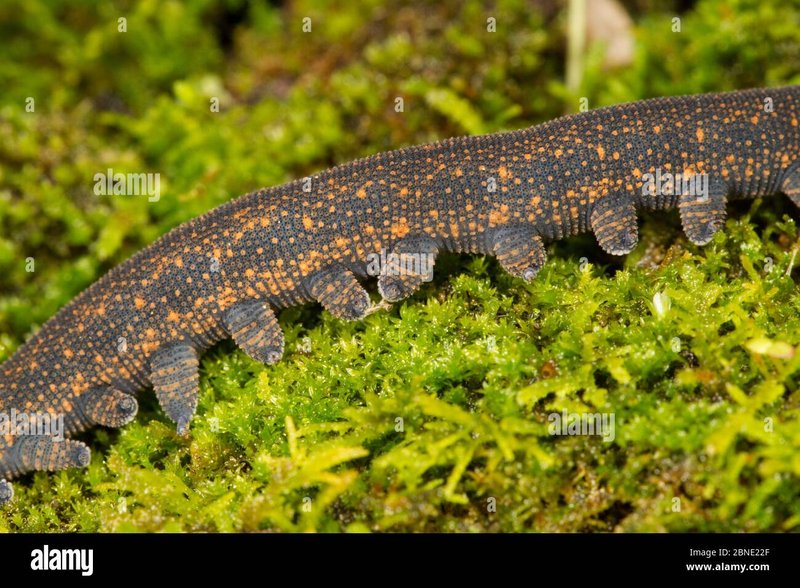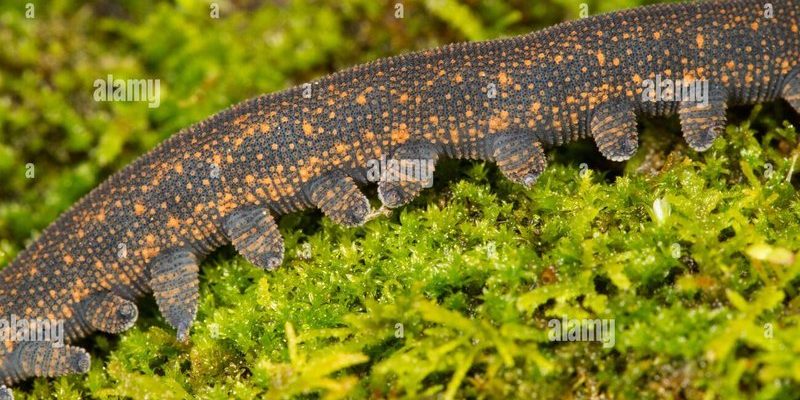
Now, if you’ve never heard of velvet worms, you’re in for a treat. Think of them as the hidden gems of the forest floor, with their soft, velvety bodies and unique hunting style. They might not be the most glamorous creatures, but their habitats in moss-covered logs tell a story of survival and adaptation. Let’s dive into this captivating world and discover how these worms make a living among the moss.
What are Velvet Worms?
Velvet worms, or *Onychophora*, are fascinating creatures that bridge the gap between insects and worms. They have soft, elongated bodies covered in a velvety texture, which is where their name comes from. These little guys might not look intimidating, but they’re equipped with some interesting features. They have a pair of sharp jaws and can shoot a sticky slime to capture prey, often small insects.
You might be wondering why they’re so special. Velvet worms are considered living fossils, having existed for around 500 million years. They offer crucial insights into evolutionary biology, showing us what some of the earliest land-dwelling creatures might have looked like. Isn’t it mind-blowing to think about how they’ve adapted over millions of years to thrive in environments like moss-covered logs?
So why are these logs a prime habitat? The answer lies in the combination of moisture and decay. Moss-covered logs create a damp environment, perfect for these creatures to flourish.
The Ideal Habitat: Moss-Covered Logs
Moss-covered logs are like a five-star hotel for velvet worms. They’re moist, shaded, and abundant in food sources. The decaying wood provides a habitat rich in organic materials, which is essential for the worms’ survival. When you think about it, these logs serve as mini-ecosystems, full of life and nutrients.
These habitats maintain a consistent level of humidity, which is crucial for velvet worms. They breathe through their skin, so if the environment gets too dry, they can easily dehydrate. In these mossy surroundings, the humidity remains high, allowing the worms to thrive without the risk of drying out.
Moreover, the decaying wood offers ample protection from predators. In these cozy confines, velvet worms can safely hunt for their next meal—mostly small insects hiding in the log’s crevices. The insulation provided by the moss also helps in regulating temperature, making it a perfect spot for these soft-bodied creatures.
How Do Velvet Worms Hunt in Their Habitats?
When it comes to finding food, velvet worms have a unique method that’s almost like a tiny horror movie scene straight out of nature. They crawl slowly over the logs, using their keen senses to detect potential prey. Once they spot something, they spring into action.
They can shoot a sticky slime from glands located near their mouth. This slime is strong and adhesive, trapping unsuspecting insects within moments. After immobilizing their prey, velvet worms use their sharp jaws to enjoy a meal, consuming it whole. It’s like they’ve turned their home into a buffet!
The moss-covered logs play a crucial role in this hunting process, providing a rich source of insects. The decay in the log attracts various insects, which find shelter there, making it a veritable hunting ground for these creatures.
The Ecosystem of Moss-Covered Logs
The ecosystem surrounding moss-covered logs is dynamic and complex. When you look closer, you’ll find a whole community living in the dampness. Besides velvet worms, you might encounter fungi, various insects, and even small mammals that play a part in the life cycle of the forest.
These logs serve as decomposing organic matter, which enriches the soil. As the worms consume insects, they also contribute to nutrient cycling within this environment. Their waste products can enhance the nutrient content of the soil, promoting plant growth around them. It’s like a sustainable mini-community working together!
In the grand scheme of things, moss-covered logs and velvet worms are vital to forest health. They help in the decomposition process and create biodiversity, ensuring the ecosystem thrives.
The Role of Moss in Velvet Worm Habitats
Moss is more than just eye candy; it’s an essential part of the velvet worm’s habitat. It plays several crucial roles, starting with moisture retention. The fluffy green plants collect water from the atmosphere and the ground, keeping the area humid. As we already know, this humidity is key for velvet worms and their unique respiratory system.
Moss also provides camouflage. The vibrant green color helps velvet worms blend in with their surroundings, protecting them from predators. Imagine being a tiny creature in a vast forest; blending in makes all the difference in survival.
Additionally, moss hosts various microorganisms and tiny insects that contribute to the food chain. It’s like a buffet of delicacies for our velvet worm friends. This symbiotic relationship between the moss and the worms fosters a balanced ecosystem, where both can thrive.
Conservation and Importance of Moss-Covered Logs
In today’s world, habitats like moss-covered logs face threats from deforestation and climate change. It’s essential to understand their importance in our ecosystem and why we should protect them. Velvet worms, being indicators of ecological health, reflect the overall state of their environment.
If these delicate habitats disappear, so do the velvet worms along with countless other species relying on moss-covered logs. Protecting these areas means preserving biodiversity and maintaining a balanced ecosystem. Simple actions can help, such as minimizing deforestation and promoting conservation efforts.
Furthermore, spreading awareness about these unique habitats can inspire others to appreciate and protect the natural world. By understanding the role of velvet worms and their habitats, we can work together to ensure future generations can enjoy the wonders of nature.
Final Thoughts on Velvet Worms and Their Mossy Homes
As we wrap up our exploration of velvet worms and their habitats in moss-covered logs, it’s clear that these tiny creatures play an essential role in our forests. Their unique way of life, combined with the nurturing qualities of moss, creates a vibrant ecosystem that’s crucial for environmental health.
So, the next time you stroll through a forest and come across a mossy log, take a moment to appreciate the hidden life within. Velvet worms may not be the most visible or glamorous creatures, but they’re a reminder of the intricate connections that exist in nature. Protecting these habitats not only aids velvet worms but also benefits the entire ecosystem.
Let’s cherish these tiny wonders and the environment they thrive in!

